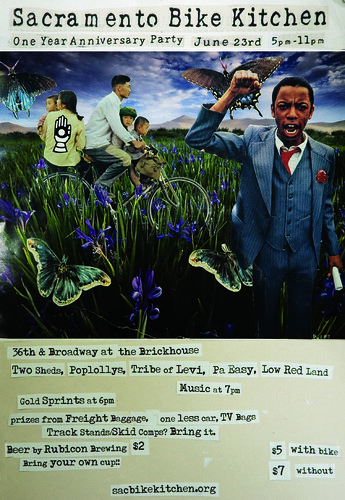It's hard not to be impressed with the lofty goals in SACOG's MTP, the long-term transportation plan for the Sacramento region. It includes such laudible goals as:
3. AIR QUALITY
Develop a transportation system and related strategies that contribute to achieving healthy air in the region...
9. HEALTH AND SAFETY
Improve the health of our residents by developing systems that would encourage walking and biking, and improve the safety and security of people on all modes in all areas...
10. ENVIRONMENTAL SUSTAINABILITY
Develop the transportation system to promote and enhance environmental quality for present and future generations.
These principles sound like the foundation for a progressive, transit-oriented transportation plan that will move us away from relying on automobiles, right?
Think again!
Too often, the individual projects funded by the ostensibly progressive MTP are the same old solution to our transportation woes-- they spend our money to build roads and encourage still more automobile traffic. This approach does nothing to improve our air quality, ensure our health and safety, or promote environmental solution. On the contrary, continued expenditures on projects to increase highway capacity promote increased traffic and exacerbate the environmental woes that come with reliance on the automobile.
Take, for example, Caltrans' current proposal
to expand Interstate 80 by adding a lane-- a so-called "bus/carpool lane." Caltrans has recently admitted that their "bus/carpool lanes"
increase traffic rather than promoting sustainability, health or improving air quality. Check out the
Draft Environmental Impact Report (DEIR) for the proposed expansion of I-80. The project would add a "bus/carpool lane" to the freeway with the objective of encouraging carpooling and decreasing congestion. It sounds good, until you comb through Caltrans' own environmental impact studies. Buried deep in the DEIR is the admission that the addition of a "bus/carpool lane" to the freeway will
increase traffic along I-80 in the eastbound direction during rush hour by 13% (compared to the 'no-build' alternative). That means 13% more vehicles on the freeway, solely as a result of the induced demand that results from freeway expansion.
This fact-- one of the most important impacts of the proposed expansion-- barely merits mention in Caltrans' DEIR. You have to look closely at p. 43 in
Chapter 2 of the DEIR to notice that the additional lane will increase eastbound traffic during rush hour from 53,000 vehicles to 60,000 vehicles. That's a major increase in traffic, and it will result in important environmental impacts. Still, Caltrans apparently doesn't think a 13% increase in traffic is "significant."
What part of this project protects air quality, community health and safety or sustainability, as the MTP promises?
SACOG's MTP, like many planning documents developed through political processes, fails to follow through on the laudable goals it sets for itself. We're promised better air quality, better health, and a more sustainable system. What we get, when all is said and done, is more cars. It's easy to see why people are cynical about politics.


